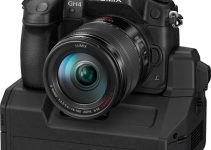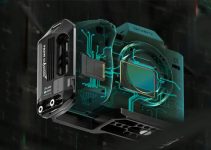Now that you’re growing as a filmmaker, you’ve probably started noticing there are a whole lot of cameras out there that can shoot some amazing video. The Canon C70 is a really attractive little camera too; it looks a lot like the DSLR and mirrorless cameras that a lot of us started filming with years ago, and from what we can see online it can shoot footage that we could only ever have dreamed about back in our days.
It’s only natural that many of you would have lots of questions about this enticing all-in-one camera from Canon. We’ve never really seen anything quite like it before, and CVP is happy to help answer some of the things you’ve been wondering most about.
Whenever a complete redesign of a camera hits the market, there are bound to be endless questions about it – especially when it carries a $5,499 price tag like the Canon C70.
Beta versions tend to find their way into the hands of early reviewers, who ratchet us up and get us to dream about upgrading, but you never really know what is what until you finally get to shoot with one yourself.
Rigging Accessories
Clearly, the Canon C70 hit the usual slate of components makers by surprise because there are very few options that have been announced for C70 rigs.
Vocas, though typically very expensive, makes fantastic film/video production hardware and have announced a top plate and PL to RF adapter designed for the C70 that uses the 4 hard mounting screws.
The top plate then allows you to adapt existing Vocas handles and rod mounting options to the top of the camera.
Zacuto, the OG of ergonomic rigs, have teased a complete camera cage for the C70 that looks to be pretty solid with tons of mounting points and a nato rail system for the top handle. They have also teased a Z-finder, screen loupe, to allow you to turn your camera screen into an EVF.
When loupes were all the rage, Zacuto was the king and this one is sure to be fantastic. Be warned, however, Zacuto’s products generally take exceedingly long periods of time to be released and you shouldn’t expect to see these components in-stock anytime soon.
Lastly, Wooden Camera, another expensive rig component maker, has teased a top handle but it is currently unclear if they intend to release it and if other parts are in development too. All eyes are on SmallRig.
Audio Solutions
The C70 features 2 mini XLR ports with phantom power and a 3.5mm TRS input as well. As far as audio goes, you should need little more than an XLR to a mini-XLR adapter to use your existing audio gear and the full slate of 3.5mm audio accessories will work without issues on this camera.
Another option is the Tentacle Track E, which is a 32-bit audio recorder that can jam sync to the C70 via its Timecode port, allowing you to have as many lavs running simultaneously as you can afford.
There is a catch, however. If you live in the USA, the audio output from the Track E is disengaged during recording because of an existing patent. You would not be able to monitor your audio while it is captured. Zoom has announced a similar product, Zoom F2, that doesn’t have the output limitation in the US.
Media
The C70 has 2 SD card slots and although Canon hasn’t announced any officially supported cards, CVP finds that Angelbird cards 128GB and above work well with the camera.
Users have reported issues with crashes from 64GB Angelbird cards, and other issues have been reported with Prograde cards. Your safest bet right now is to stick to 128GB and above Angelbird cards.
RAW
The Canon C70 doesn’t record raw video or output raw video via its HDMI port. The highest resolution you can capture externally is 4K 10-bit 4:2:2.
Canon would be a little crazy to release any raw capabilities in this camera as it would cannibalize sales for the C300 Mark III, which shares the same sensor as the C70. If you require raw recording your best bet is to pick up a C300 III or a used C200, which still has a fantastic raw image.
Speed-booster Autofocus Performance
Nobody really knows how well it will perform since they’ve been released in such limited stock, but you should expect equal performance to adapted RF to EF lenses with the speed-booster.
Additionally, the camera is best for use with Canon’s EF lenses currently. RF lenses are fantastic, but expensive, in short supply, and only work on RF mount cameras. So your best bet is to adapt, and the current best professional mount adapter you can get for this camera is the Vocas RF to PL.
However, the Kippertie Adapta would work very nicely with this camera, and it has a locking EF mount.
Questions Answered
These are the most common questions people have about this camera, which from the look of its images is sure to be a real winner out on a shoot, but I’m rather shocked to see fewer people who are skeptical about the form factor. The number one thing that got me to stop shooting on mirrorless and DSLR cameras years ago was the form factor.
How comfortable could it be to shoot with a camera that from the looks of it will be front heavy and weighted to the left? I guess we’ll have to wait until more of them find their way into the wild.
Remember, your camera doesn’t always have to be the newest camera, and a better value for your buck right now might be to pick up a used C200 and start shooting in Raw. No internal codec or external recorder will ever match the simplicity of internal Raw recording, and since I started shooting in Raw I don’t think I could ever go back.
[source: CVP]
B&H Order Link:
- Canon EOS C70 Cinema Camera (B&H)
Disclaimer: As an Amazon Associate partner and participant in B&H and Adorama Affiliate programmes, we earn a small comission from each purchase made through the affiliate links listed above at no additional cost to you.
Claim your copy of DAVINCI RESOLVE - SIMPLIFIED COURSE with 50% off! Get Instant Access!




